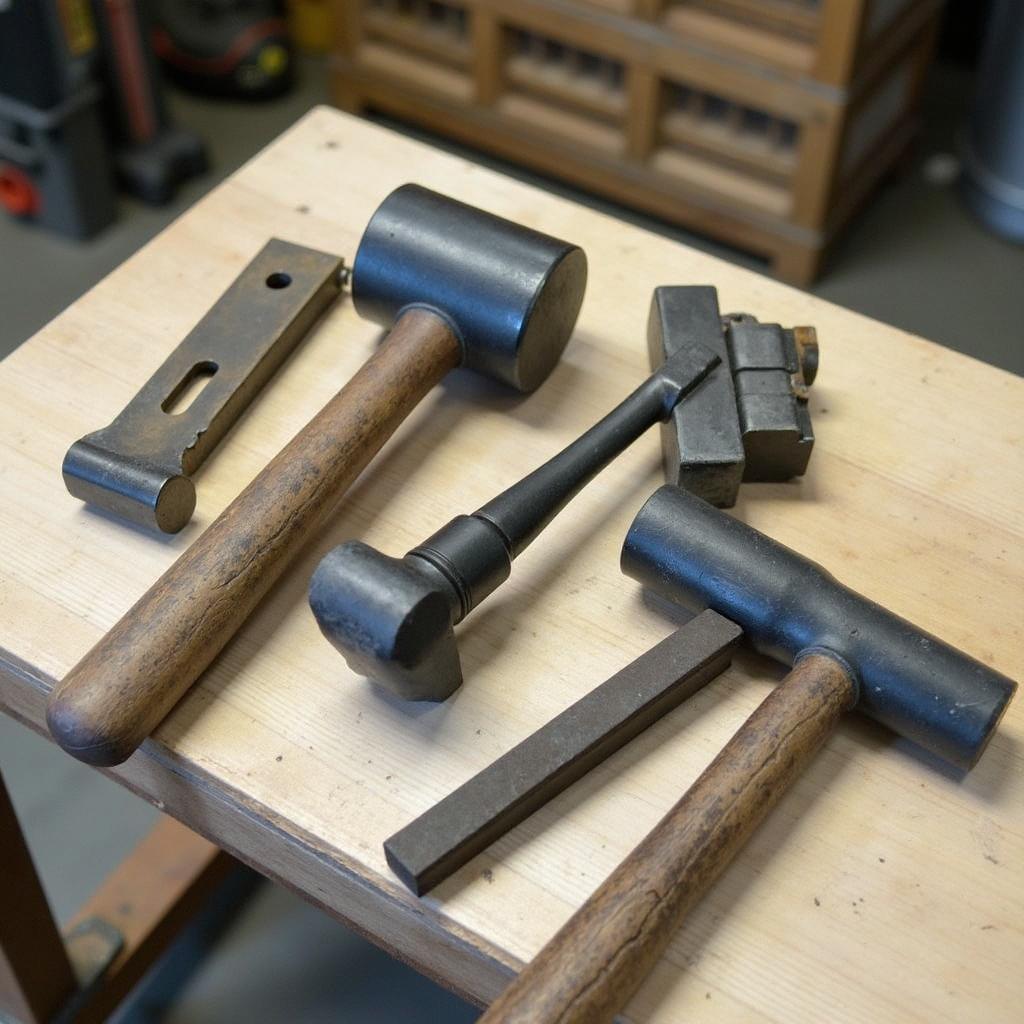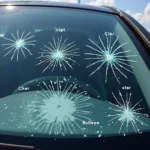Car body repair hammers are essential tools for any professional or DIY enthusiast tackling dents, dings, and collisions on a vehicle’s exterior. Unlike your typical claw hammer, these specialized tools come in a variety of shapes and sizes, each designed for specific tasks in the bodywork process.
Understanding the Importance of the Right Hammer
Choosing the correct car body repair hammer is crucial for achieving professional-looking results and avoiding further damage to the vehicle. Using the wrong type of hammer or improper technique can lead to:
- Uneven surfaces: An improper hammer can create high and low spots, making it difficult to achieve a smooth finish.
- Stretching metal: Over-hammering or using the wrong hammer can thin and stretch the metal, compromising its structural integrity.
- Work hardening: Incorrect hammering techniques can cause the metal to harden, making it brittle and prone to cracking.
Common Types of Car Body Repair Hammers and Their Uses
With a wide array of options available, understanding the purpose of each type of hammer will help you select the right tool for the job:
1. Slapping Hammers
- Description: These hammers have a large, flat face ideal for shaping large areas of sheet metal. They are often used in conjunction with a dolly block to evenly distribute force.
- Best for: Smoothing out large dents, shaping panels, and removing buckles.
2. Pick and Finish Hammers
- Description: Featuring a rounded face on one side and a pointed pick on the other, these versatile hammers offer precision and control.
- Best for: Removing small dents, shaping curves, and refining body lines.
3. Shrinking Hammers
- Description: Designed to shrink stretched metal, these hammers often have a checkered or textured face that concentrates force on a smaller area.
- Best for: Repairing stretched areas, shrinking welds, and addressing high spots.
4. Dolly Blocks
- Description: While not technically a hammer, dolly blocks are essential partners for many hammering tasks. They provide a solid backing surface to absorb and distribute hammer blows.
- Best for: Preventing damage to the opposite side of a panel when hammering, ensuring a smoother, more controlled repair.
5. Other Specialized Hammers
- Dinging Hammers: Used for accessing and repairing dents in tight spaces.
- Body Spoons: Ideal for smoothing out large, shallow dents.
- Cross Peen Hammers: Used for shaping and straightening edges.
Expert Tips for Using Car Body Repair Hammers
- Safety first: Always wear safety glasses and gloves when using car body repair hammers.
- Start with the least aggressive approach: Begin with a lighter hammer and gradually increase force as needed.
- Work slowly and methodically: Avoid rushing the repair process, as this can lead to mistakes.
- Use heat sparingly: Applying heat to the metal can aid in reshaping, but excessive heat can damage the paint and weaken the metal.
- Practice makes perfect: Like any skill, mastering the use of car body repair hammers takes time and practice.
“When it comes to bodywork, using the right hammer and proper technique are paramount,” says John Smith, a veteran auto body technician with over 20 years of experience. “It’s important to remember that patience is key. Take your time, assess the damage, and choose the appropriate tools for a professional-looking repair.”
Conclusion
Car body repair hammers are indispensable tools for restoring a vehicle’s exterior to its former glory. By understanding the different types of hammers, their specific uses, and expert techniques, you can confidently tackle a wide range of bodywork tasks. Remember, selecting the right hammer for the job is crucial for achieving a professional and long-lasting repair.
FAQ
1. Can I use a regular hammer for car body repair?
Regular hammers lack the specific design and weight distribution of car body repair hammers, potentially causing more harm than good.
2. What is the best way to prevent damaging the paint when hammering?
Using a dolly block behind the repair area and applying controlled force can minimize paint damage.
3. How do I know if I need to use heat during the repair?
Heat can be helpful for stubborn dents and stretched metal, but consult a professional if you’re unsure about using it.
4. Where can I find more information on specific car body repair techniques?
Check out our detailed guides on dent removal and collision repair for step-by-step instructions and expert advice.
5. What if I’m not comfortable tackling car body repair myself?
CarRepairOnline can connect you with trusted and qualified auto body repair shops in your area. Contact us today for a free quote!
Need assistance with your car repair needs?
Contact our 24/7 customer support team via WhatsApp: +1(641)206-8880 or email us at cardiagtechworkshop@gmail.com.



